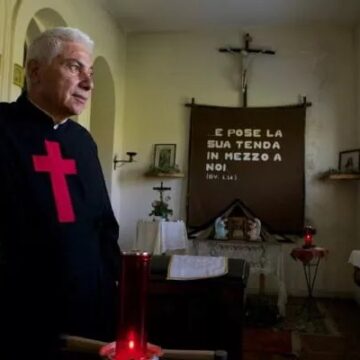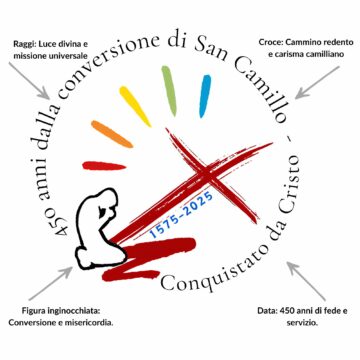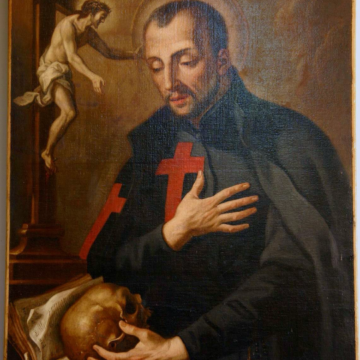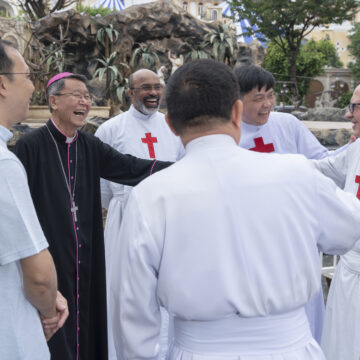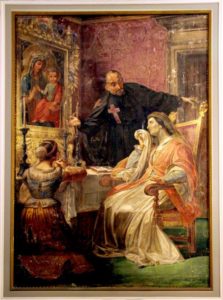 The history of the painting – the most accurate and documented – is very beautiful and simple.
The history of the painting – the most accurate and documented – is very beautiful and simple.
On 15 May 1616 Signora Settimia De Nobili, the wife of Sig. Giovanni Paganelli, a citizen of Rome, was dying in Montecitorio, a few steps away from the Church of St. Mary Magdalene.
This lady was cared for during her infirmity by Father Cesare Simonio, a zealous Minister of the Sick who had grown up at the school of St. Camillus to whom he was especially attached because of his great love for the sick and Our Lady. Fr. Simonio was also the rector of the Church of St. Mary Magdalene but his principal task was to care for the sick in their homes.
Signora Settimia practised great veneration in one of the rooms of her house for a painting of Our Lady. We are not told when and how she came to own it but during her long sickness this pious lady found her greatest comfort by praying constantly under the gaze of her devout painting.
Father Simonio, who had been called to visit the sick woman to hear her confession and comfort her, remained captured by great admiration and devotion for the fine painting, expressing in the end his opinion and wish that it should be hung at the right time for public veneration in the Church of St. Mary Magdalene.
The lady said that she was ready to make over the painting but only after her death.
It is likely – and here the documented story gives way to tradition and the easy interpretation of a chronicler – that F. Simonio asked for information about this painting. He thus came to learn that the valuable painting had belonged to Pius V (1566-1572) and that he had kept it with him in his rooms in the Vatican. As a consequence it began to be thought and said that this painting was the one in front of which the Supreme Pontiff and saint, when praying, had learnt of the victory of Lepanto (7 Oct. 1571).
However it is probable that as the painting involved an iconographic theme or subject (Our Lady of St. Luke) that was very widespread, this tradition was in effect more linked to St. Pius V than in a specific way (with certainty based on the facts) to this or other copies.
The story continues in a known way on its journey from the day when the picture was entrusted to the Church of St. Mary Magdalene and to the religious of St. Camillus.
By the act of a public notary of 19 February 1614, Signora Settimia De Nobili left the painting of Our Lady with the Baby Jesus in her left arm to the Church of St. Mary Magdalene of the Regular Clerics the Ministers of the Sick. This devout picture, it was laid down, had to be handed over to the fathers before the funeral of the lady of who donated it.
Signora Settimia died on 25 May 2016, cared for until her last breath by Fr. Cesare Simonio. The next day, in line with what she had laid down, the picture of Our Lady was taken to the Church of St. Mary Magdalene and placed on the high altar.



